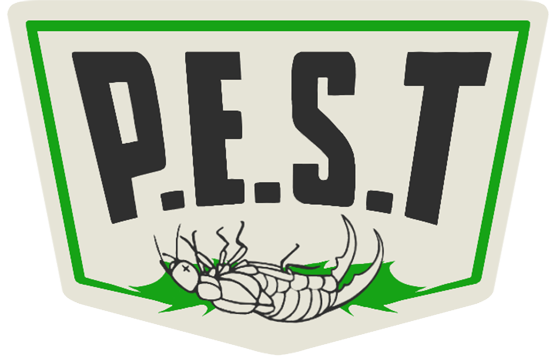Imagine a perfect family backyard barbecue suddenly interrupted by the menacing buzz and painful stings of wasps and bees. Such incidents can ruin precious moments and create unease around your home. This is where Premiere Exterminating Solutions Team (P.E.S.T.) steps in. With extensive experience in effectively controlling and removing stinging insects, P.E.S.T. offers peace of mind to households and businesses alike. This service page is designed to educate you on the common stinging insect issues in Northern Central Indiana and demonstrate how our expert services can safely and effectively resolve these persistent problems, ensuring your outdoor spaces remain pleasant and safe.
There are several common misconceptions about stinging insects that can lead to confusion and improper handling. Firstly, it's important to understand that not all bees are harmful; in fact, most bees are not aggressive and will not sting unless provoked. This stands in contrast to the popular but mistaken belief that all bees pose a danger to humans. Additionally, many people mistakenly assume that a single treatment for stinging insects is sufficient. However, ongoing monitoring and maintenance are crucial to ensure that the removal is complete and to prevent future infestations from occurring. Lastly, a prevalent error is the belief that all stinging insects are bees. In reality, there are significant differences between wasps, bees, and yellow jackets, each with distinct behaviors and risk levels. Recognizing these differences is key to managing and mitigating the risks associated with each type of stinging insect effectively.
Characteristics Of Common Stinging Pests
- Wasps are characterized by their slender bodies with narrow waists and smooth skin, highlighted by bright yellow and black markings. They are known for their aggressive nature when threatened, with the ability to sting multiple times. Wasps commonly build their paper-like nests in sheltered areas such as under eaves, behind shutters, or within bushes, often close to human habitation.
- Honeybees are small, furry insects adorned with golden-yellow colors and darker bands. These bees are generally docile and will not sting unless provoked; however, a sting results in their death as their stinger detaches. They primarily feed on nectar and pollen, making them vital pollinators in many ecosystems, including local gardens and agricultural areas.
- Yellow jackets exhibit bright yellow and black patterns on their bodies and are recognized by their rapid, side-to-side flight patterns before landing. Notoriously aggressive, especially in late summer when food is scarce, they pose significant risks during outdoor activities. They typically construct their nests underground or in dark, secluded areas like attics or wall voids, which can make them particularly challenging to remove safely.
Identifying Infestations And The Issues They Cause
Identifying a stinging insect infestation early can be crucial in managing the potential risks associated with these pests. Common signs include the visible presence of nests around the property, particularly in sheltered areas such as under eaves, inside garages, or even within walls. Increased insect activity, with frequent sightings of insects flying to and from a specific area, often indicates a nearby nest. Additionally, audible buzzing noises, especially from hidden areas like wall cavities, can suggest an infestation that might not yet be visible.
Stinging insects pose several significant problems that affect health, property, and business operations. The health risks associated with these pests can range from mild irritation and swelling to severe, potentially life-threatening anaphylactic shock due to allergic reactions. Additionally, stinging insects like wasps and hornets often build nests in walls, attics, and around roofing, which can cause considerable structural damage over time. For businesses, especially those with outdoor spaces such as cafes and restaurants, the presence of stinging insects can deter customers, negatively impacting the overall customer experience and profitability.
Stinging insects can trigger a range of allergic reactions, from minor skin irritation and hives to severe anaphylaxis, which requires immediate medical attention. It is essential to understand the first aid measures necessary after a sting, such as the application of ice to reduce swelling or using an epinephrine auto-injector in cases of anaphylactic reactions. Preventive advice includes avoiding wearing strong perfumes or scents that might attract insects and being cautious around known nest sites to prevent provoking these creatures unnecessarily.
Don't let stinging insects disrupt your peace of mind and safety. Contact Premier Exterminating Solutions Team today to schedule a free consultation and evaluate your specific insect problem. At P.E.S.T., we stand by our satisfaction guarantee, ensuring effective removal of stinging insects from your property. We're committed to providing you with quick and easy solutions, so visit our website to access our contact forms, or use our customer service numbers and online scheduling tools for immediate assistance. Let us help you enjoy your outdoor spaces without the threat of painful stings, ensuring your home or business is a safer, more comfortable environment.
Frequently Asked Questions
Q1: What types of stinging insects are most common in Northern Central Indiana?
A1: In Northern Central Indiana, the most commonly encountered stinging insects are wasps, yellow jackets, and honeybees. Wasps and yellow jackets are particularly aggressive, especially in the late summer and early fall when their food supply begins to diminish. Honeybees are generally less aggressive and only sting when provoked, but they can still be a nuisance near homes and gardens.
Q2: How can I safely remove nest of stinging insects from my property?
A2: Removing a nest of stinging pests can be dangerous if not done correctly. We recommend contacting professional pest control services like P.E.S.T. for safe and effective removal. Our trained technicians have the appropriate equipment and expertise to handle nest removal without putting you or your family at risk of stings.
Q3: Are the treatments used to control stinging insects safe for pets and children?
A3: Yes, the safety of your family and pets is a priority at P.E.S.T. We use treatments that are effective against stinging insects while adhering to safety standards that minimize any risk to humans and animals. It’s important, however, to follow all guidelines provided by our technicians regarding the treatment area during and after application to ensure safety.
All Rights Reserved | Premier Exterminating Solutions Team

